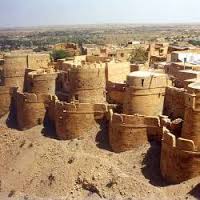Jaisalmer Travel
Jaisalmer is one of the important cities of glorious Rajasthan, and is also known as the city of Golden Fort. Jaisalmer is adjacent to the great Indian desert of Thar, and therefore, offers elusive glimpses of the desert life. Moreover, Jaisalmer has numerous Havelis, and temples, besides the grand golden fort. The Jaisalmer Travel Forum offer an exclusive opportunity to explore those havelis and Jain temples constructed in between 8th and 15th centuries. Jaisalmer attracts thousands of national and international tourists every year, most of them being directed and served by our Jaisalmer Travel Forum and India Travel Forum.















